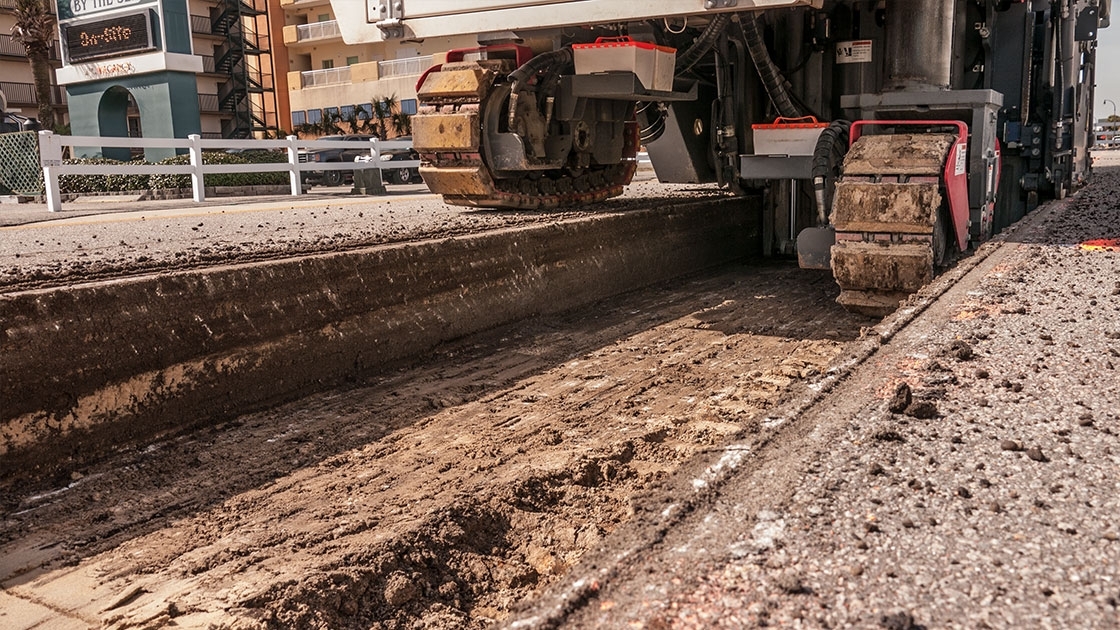Milling Q&A
Why is milling a good option?
There are a number of different reasons for milling a paved area instead of simply repaving over the existing surface.
Total Failure
Asphalt has exceeded its effective life cycle and needs to be removed and replaced.
Transition Milling
Removing asphalt to allow for proper transitions between surfaces.
• Removing asphalt in front of driveways to eliminate uneven transitions or to facilitate positive drainage.
• Removing asphalt at curb line to allow for proper depth of new asphalt surface, match the original grade of the curb line, and to ensure a smooth transition and promote positive drainage from asphalt pavement to gutters.
Leveling
Mill roadway irregularities to allow for a smoother ride on final riding surface.
Recycling
Recycling of the road surface is another reason for milling. Milling is widely used for pavement recycling today, where the pavement is removed and ground up to be used as the aggregate in new pavement.
For asphalt surfaces, the product of milling is reclaimed asphalt pavement (RAP), which can be recycled in the asphalt hot mix asphalt (pavement) by combining with new aggregate and asphalt cement (binder) or a recycling agent. This reduces the impact that resurfacing has on the environment.
What are some other benefits of milling?
• Keep overhead clearances under bridges and overpasses
• Texture the surface for skid control and improved bonding with new Asphalt surface lifts
• Minimize traffic interruption
• Lower costs, extending the maintenance budget to provide more miles of pavement rehabilitation.
